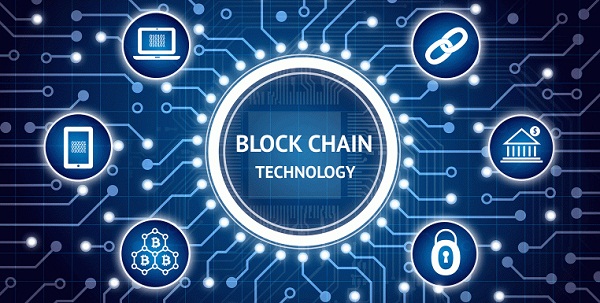Blockchain technology, often associated with cryptocurrencies like Bitcoin, is much more than just a foundation for digital currency. It represents a groundbreaking method of storing and sharing data securely and transparently. In recent years, its applications have expanded into various industries, from finance to healthcare, supply chain management, and beyond. But what exactly is blockchain, and why is it considered revolutionary?

What is Blockchain?
At its core, blockchain is a decentralized digital ledger that records transactions across multiple computers. It is designed to be transparent, secure, and immutable, meaning that once data is recorded, it cannot be altered or deleted. The technology operates through a chain of blocks, with each block containing a list of transactions or data. These blocks are linked together in chronological order, forming a “blockchain.”
Unlike traditional centralized databases, which are controlled by a single entity, blockchain is decentralized. This means no one person or organization has complete control over the entire system. Instead, a network of computers (nodes) collaborates to validate and record transactions, making it highly secure against fraud or hacking.
How Does Blockchain Work?
Blockchain technology operates through three fundamental components:
![What is Blockchain Technology? How Does Blockchain Work? [Updated]](https://www.simplilearn.com/ice9/free_resources_article_thumb/how_blockchain_works.jpg)
- Blocks: A block contains data, the block’s hash (a unique identifier), and the previous block’s hash. The data within a block can vary depending on the application but typically includes details of a transaction.
- Mining: Mining is the process by which new blocks are added to the blockchain. Miners (participants in the network) use computational power to solve complex mathematical problems, which allows them to validate transactions and create new blocks.
- Decentralization: The blockchain is maintained by a distributed network of nodes. Each node has a copy of the entire blockchain, ensuring transparency and preventing any single entity from manipulating the data. Any changes to the blockchain must be verified by the majority of the network.
Applications of Blockchain Technology
While blockchain was initially developed to support digital currencies, its applications have since expanded into various sectors:
- Finance: Blockchain has transformed the finance industry by enabling secure and faster transactions without the need for intermediaries like banks. It powers smart contracts, which are self-executing agreements with terms directly written into code.
- Supply Chain Management: Blockchain improves transparency in supply chains by providing real-time data about the movement and origin of goods. This enhances accountability and reduces fraud.
- Healthcare: In the healthcare industry, blockchain offers a secure method for storing and sharing patient records, ensuring privacy while allowing authorized parties to access important medical data.
- Voting Systems: Blockchain has the potential to revolutionize voting systems by providing secure, transparent, and tamper-proof methods for casting and counting votes.
- Digital Identity: Blockchain can also be used to create digital identities that are secure, verifiable, and controlled by individuals, reducing identity theft and fraud.
Advantages of Blockchain Technology
Blockchain technology has several distinct advantages that contribute to its growing popularity:
- Security: Since blockchain uses cryptographic techniques to secure data, it is highly resistant to hacking or data breaches.
- Transparency: Transactions are visible to all participants in the network, ensuring trust and accountability.
- Decentralization: With no single point of control, blockchain removes the need for intermediaries, reducing costs and increasing efficiency.
- Immutability: Once data is recorded on the blockchain, it cannot be altered or deleted, creating a permanent and unchangeable record of transactions.
Challenges and Limitations
Despite its numerous advantages, blockchain technology is not without challenges:
- Scalability: As blockchain networks grow, they can face challenges in processing large volumes of transactions efficiently.
- Energy Consumption: Mining, especially in proof-of-work blockchains like Bitcoin, requires significant energy, leading to concerns about environmental impact.
- Regulation: The decentralized nature of blockchain poses challenges for regulators, as traditional legal frameworks may not be well-suited to handle the technology’s unique attributes.
Conclusion
Blockchain is a transformative technology that has the potential to revolutionize various industries by providing secure, transparent, and decentralized solutions. While it still faces challenges in terms of scalability and regulation, its applications continue to grow, making it an exciting area of development for the future. As blockchain technology evolves, we can expect to see even more innovative uses that will change how we live, work, and interact with the world.



